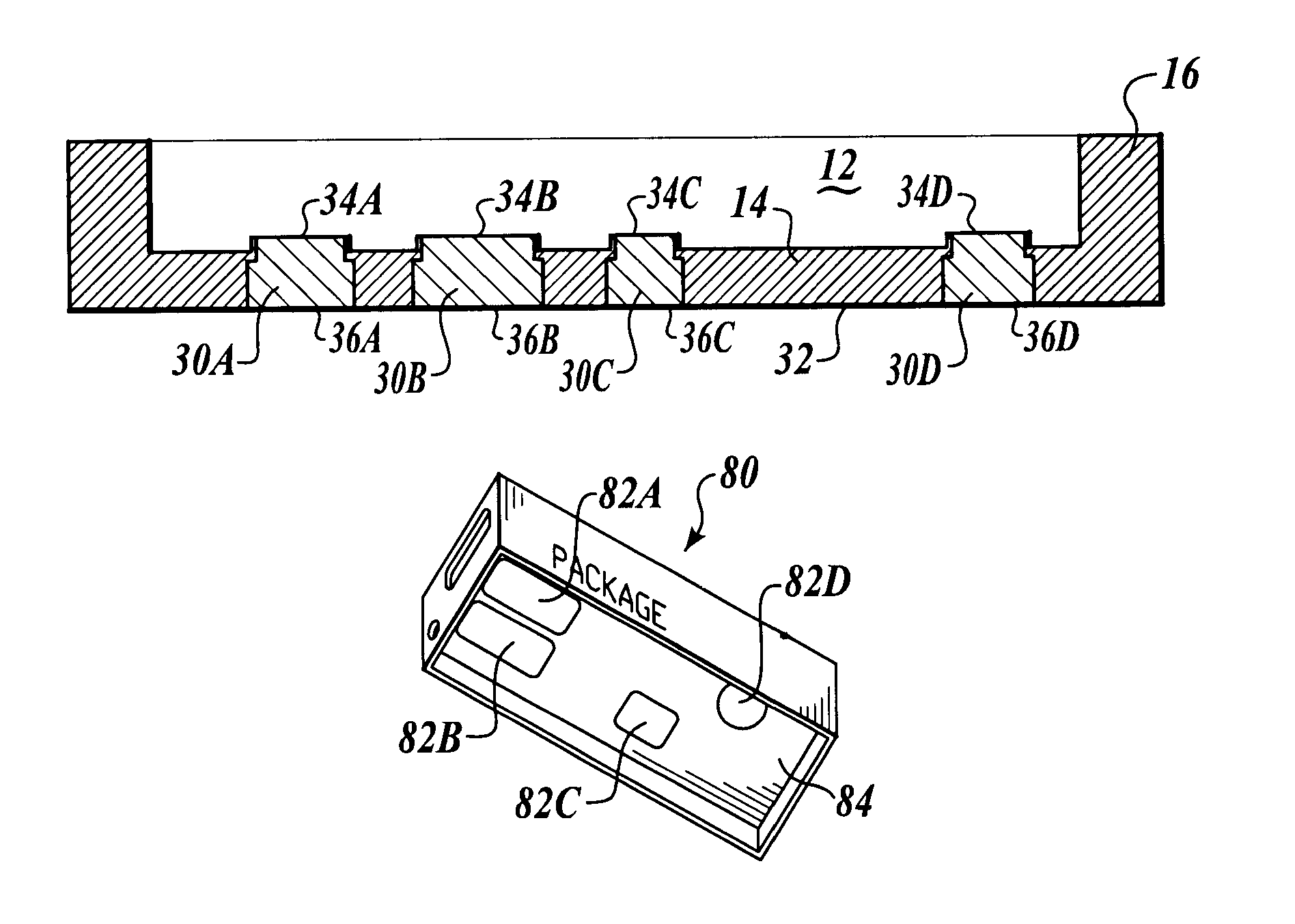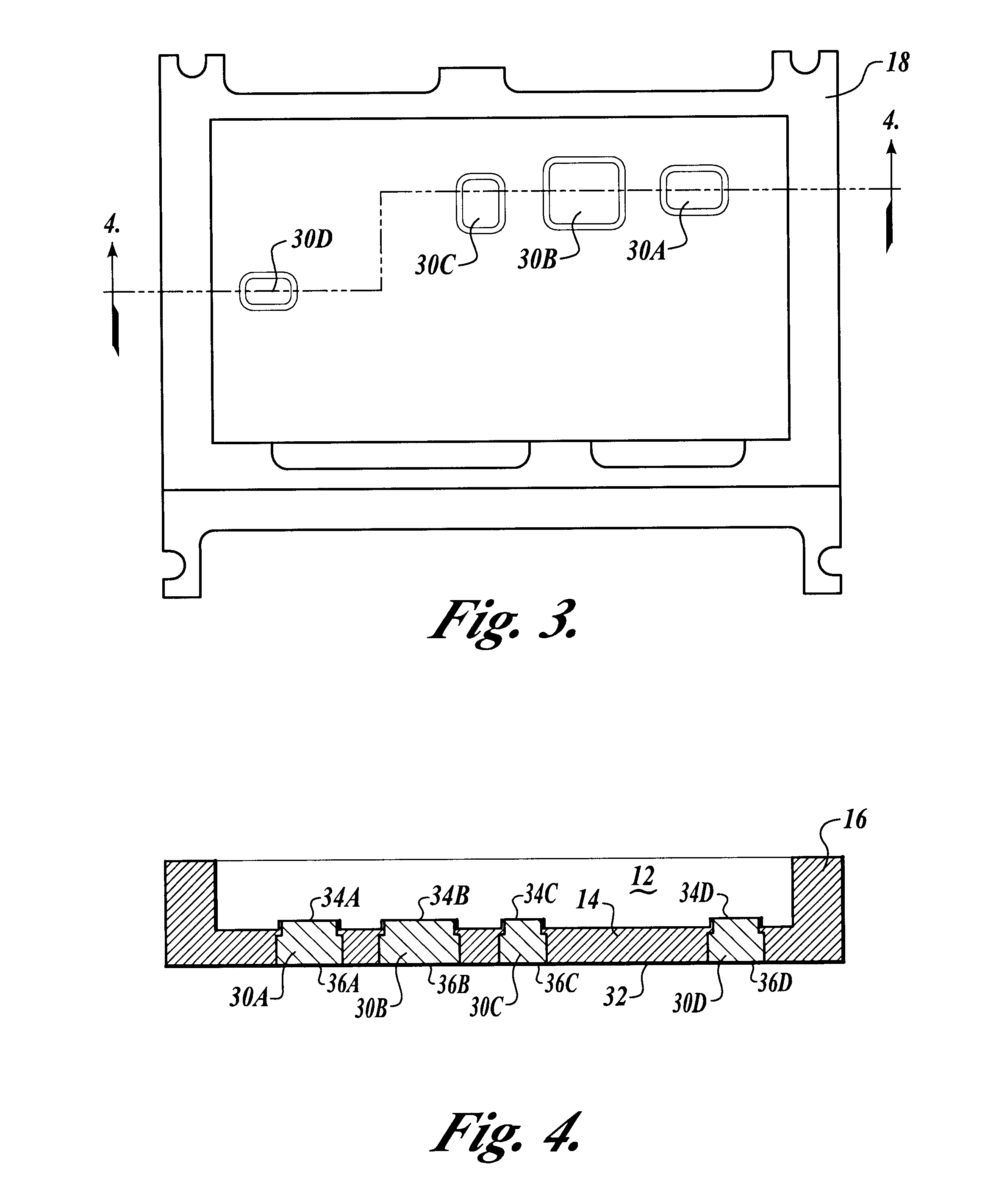Electronics packages having a composite structure and methods for manufacturing such electronics packages
a technology of electronics and composite structures, applied in the direction of transportation and packaging, electrical apparatus and process, electrical apparatus construction details, etc., can solve the problems of affecting the service life of components, so as to achieve reliable hermeticity and desirable mechanical strength properties
- Summary
- Abstract
- Description
- Claims
- Application Information
AI Technical Summary
Benefits of technology
Problems solved by technology
Method used
Image
Examples
Embodiment Construction
Electronics packages of the present invention are composed of a primary metallic component and one or more regions of a secondary material having thermal conductivity properties that are different from the thermal conductivity properties of the electronics package. A metallic component of the primary electronics package material is metallurgically compatible with a metallic component of the secondary material, such that a metallurgical bond may be formed between the electronics package and the secondary region(s). The CTE of the secondary material generally matches the CTE of the primary metallic material of the package. The secondary region(s) are arranged to provide one or more heat sinks in the electronics package, providing for dissipation of heat from a heat source on an electronic device mounted within the electronics package. Secondary regions may alternatively or additionally may be arranged to provide one or more area(s) for mounting electronic components such as ceramic ch...
PUM
| Property | Measurement | Unit |
|---|---|---|
| temperature | aaaaa | aaaaa |
| particle sizes | aaaaa | aaaaa |
| particle sizes | aaaaa | aaaaa |
Abstract
Description
Claims
Application Information
 Login to View More
Login to View More - R&D
- Intellectual Property
- Life Sciences
- Materials
- Tech Scout
- Unparalleled Data Quality
- Higher Quality Content
- 60% Fewer Hallucinations
Browse by: Latest US Patents, China's latest patents, Technical Efficacy Thesaurus, Application Domain, Technology Topic, Popular Technical Reports.
© 2025 PatSnap. All rights reserved.Legal|Privacy policy|Modern Slavery Act Transparency Statement|Sitemap|About US| Contact US: help@patsnap.com



